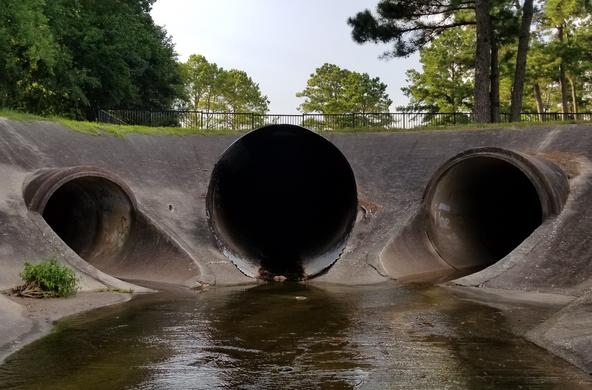The havoc wrought by hurricanes Sandy and Irene heightened awareness of the impacts of flooding. In a forum co-sponsored by the Cornell Cooperative Extension of Dutchess, Columbia, and Greene counties; the New York Water Resources Institute; the New York State Department of Environmental Conservation Hudson River Estuary Program; and the Hudson Estuary Watershed Resiliency project, an impressive roster of experts came together at the Cary Institute to present an overview of major flooding events, which are expected to happen more frequently.
New York has suffered eleven flooding events requiring FEMA assistance in the last 15 years, according to Wayne Reynolds, one of the presenters. In 2007, in Delaware County, four lives were lost, hundreds of homes destroyed, and 11 inches of rain came down in four hours. In 2011, again in Delaware County, $15 million of damage was sustained, with bridges and roads having to be replaced and repaired. According to the experts who presented at the forum, the answer is not in engineering.
We have to work with nature, move away from old infrastructure and understand where we can and cannot develop. “We cannot design our way out of nature,” said Reynolds, Commissioner of the Department of Public Works for Delaware County. “Sometimes we just need to get beyond what was there historically and move that road or that bridge to another place. What people don’t understand is that the whole bandwidth of the flood plain is free rein for the rivers.” Mr. Reynolds showed graphic pictures of county roads eaten away by rivers, bridge abutments scoured down, and water running into valleys and villages, even after his department spent millions of dollars in engineering. “Big abutments don’t work. No longer will I leave any concrete in a bridge. And the more natural you can leave a stream, the better.”
Gregg Swanzey, the head of the office of Economic Development of the City of Kingston, described how Kingston became a Climate Smart Community and brought together the Kingston Flood Taskforce after the devastating effects of Hurricane Irene. They were, therefore, prepared for Hurricane Sandy. The approach that Mr. Swanzey decribed is called FAR, for “Fortify (like building levees), Accommodate (allow the water to flow through certain structures) and Relocate (meaning move away if there is repeated flooding).” The process calls for consensus-building in the community, participatory mapping showing flooding risks, and planning assessments.
Scenic Hudson has done modeling of the whole area, predicting potential damage from so-called 100-year floods. Estimated future damage due to future sea-level rise: $126 million. By 2100, according to the projective flood mapping, the entire Rondout area could be inundated all the time. Mr. Swanzey said municipalites need to assess and plan to manage future stormwater surges: build awareness and consensus; evaluate zoning codes and work with developers and residents. “Are the pipes big enough to handle increased stormwater flow?”
Don Bartles, planning board chair of Pine Plains, who worked in the Dutchess County Department of Public Works, said: “I was interested in the highway aspects of this forum. I will look to reviewing our planning and zoning laws within the flood plain and review and reinforce the protections factors within our zoning.”
Climatologist Jessica Rennells, from the Northeast Regional Climate Center, reinforced the data that Cary has been presenting over the past years demonstrating that sea levels are rising, snow melt is happening earlier and the Northeast is getting wetter. The Hudson Valley has gone from a 35- to a 60-inch increase of rain over the last 20 years. Heavy downpours are increasing and are projected to increase further, leaving flooding impacts on water quality, infrastructure and agriculture. “Due to humidity, it will feel like Virginia or Georgia, and summer droughts are projected to affect water supplies, agriculture, ecosystems and energy production,” continued Ms. Rennells.
Cary Institute scientist Stuart Findlay said: “In the future we will have adequate water supply in this area, but we will have water quality issues due to peak flooding and infiltration.” He explained how land use affects flow, with urban and suburban growth and increased impervious surfaces delivering water faster to the channels, which thus peak faster. Findlay explained that flooding is an event that stream ecosystems can cope with and recover from. He said that the most extreme flooding will happen in urban areas, and that towns need to change their thinking, template and planning mechanisms around this issue.
Carolyn Klocker of the Cornell Cooperative Extension Dutchess County’s Environment program moderated a panel discussion with the speakers. The CCEDC will be hosting future programs for towns on floodplain mapping and other flooding issues, since this is an ongoing environmental issue for this region.




